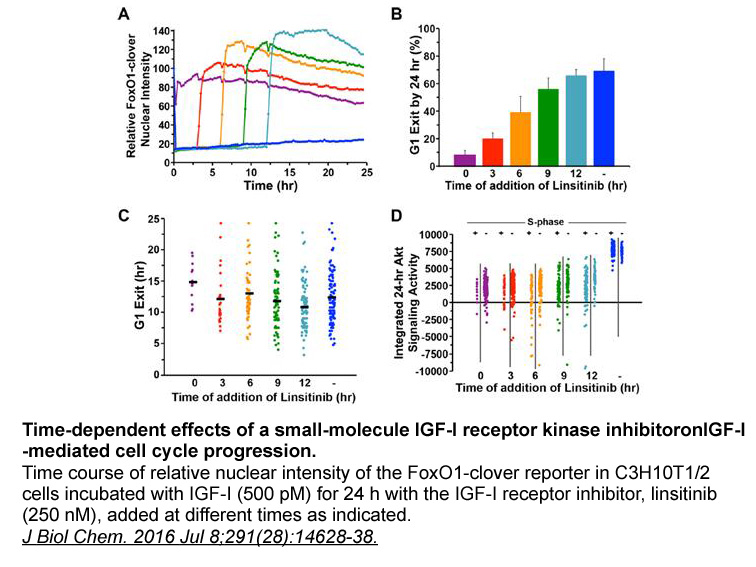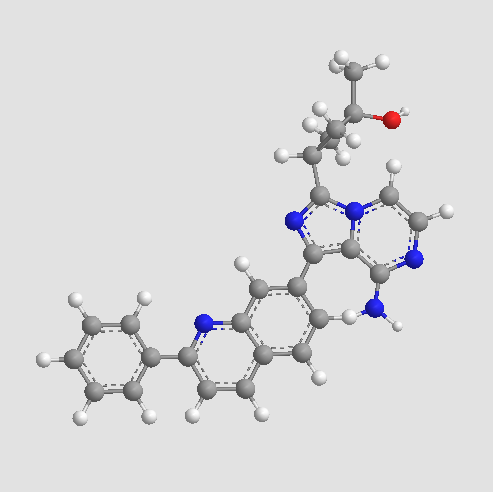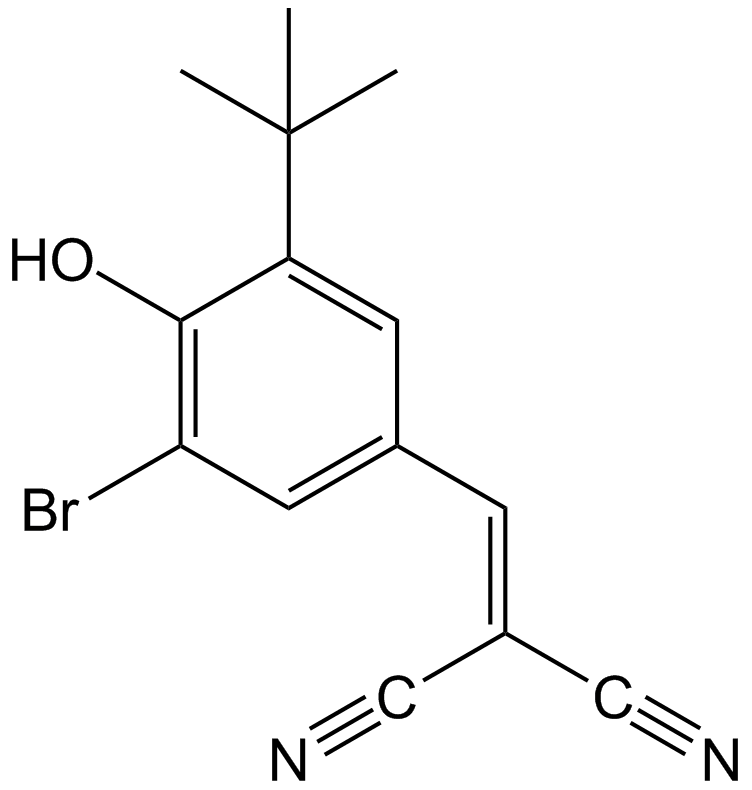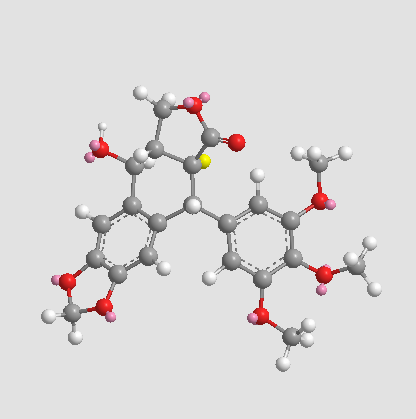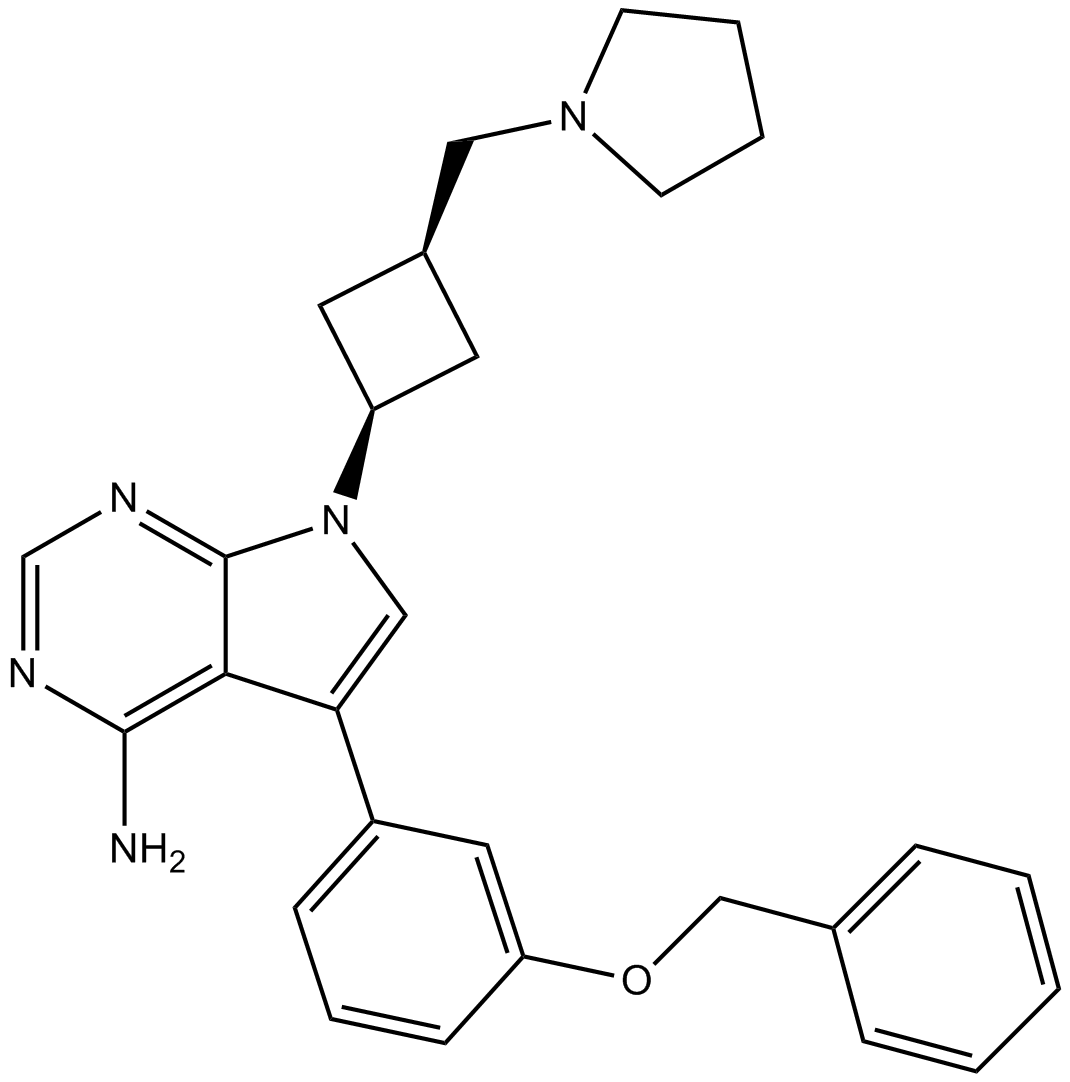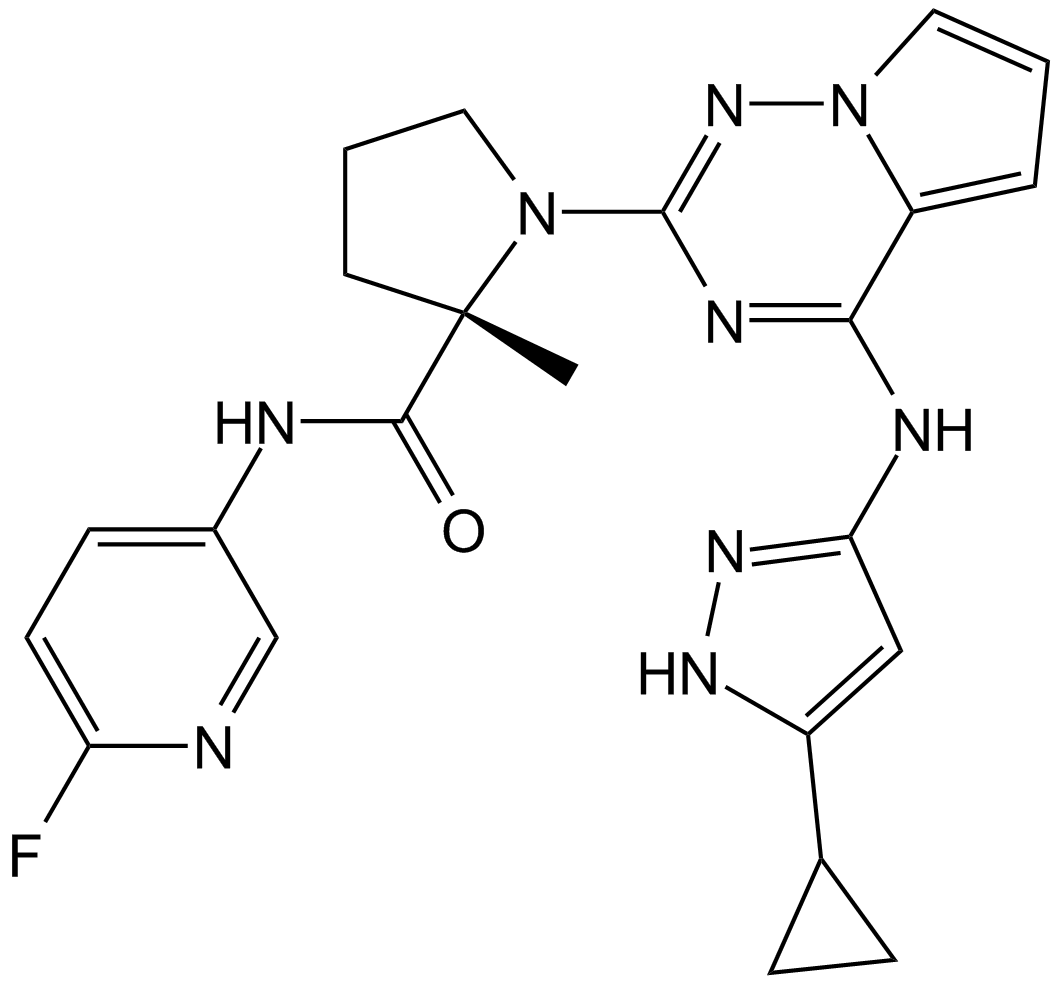Linsitinib
Linsitinib (CAS 867160-71-2), also known as OSI-906, is a small-molecule inhibitor targeting both insulin receptor (IR) and insulin-like growth factor-1 receptor (IGF-1R) kinases. It exhibits potent inhibitory effects, with IC50 values of 75 nM against IR and 35 nM against IGF-1R. In vitro studies using the 3T3/hulGF-1R (LISN) cell line demonstrate that Linsitinib inhibits IGF-1R ligand-dependent autophosphorylation and downstream signaling via pERK1/2, pAKT, and p-p70S6K. It shows antiproliferative activity across multiple cancer cell lines and exhibits dose-dependent tumor growth inhibition in LISN xenograft animal models, supporting its utility in oncology research.
- 1. Sean ross,Rotwein. "Methods of selecting akt agonists or antagonists." US Patent App. 15/085,757, 2016.
- 2. Gross SM, Rotwein P. "Unraveling Growth Factor Signaling and Cell Cycle Progression in Individual Fibroblasts." J Biol Chem. 2016 Jul 8;291(28):14628-38. PMID:27226630
- 3. Gross SM, Rotwein P. "Mapping growth-factor-modulated Akt signaling dynamics." J Cell Sci. 2016 May 15;129(10):2052-63. PMID:27044757
| Physical Appearance | A solid |
| Storage | Store at -20°C |
| M.Wt | 421.51 |
| Cas No. | 867160-71-2 |
| Formula | C26H23N5O |
| Synonyms | OSI 906; OSI-906; OSI906 |
| Solubility | ≥21.08 mg/mL in DMSO; insoluble in H2O; ≥2.88 mg/mL in EtOH with gentle warming and ultrasonic |
| Chemical Name | 3-[8-amino-1-(2-phenylquinolin-7-yl)imidazo[1,5-a]pyrazin-3-yl]-1-methylcyclobutan-1-ol |
| SDF | Download SDF |
| Canonical SMILES | CC(C1)(CC1c1nc(-c(cc2)cc3c2ccc(-c2ccccc2)n3)c2[n]1ccnc2N)O |
| Shipping Condition | Small Molecules with Blue Ice, Modified Nucleotides with Dry Ice. |
| General tips | We do not recommend long-term storage for the solution, please use it up soon. |
| Cell experiment: [1] | |
|
Cell lines |
HepG2, Hep3B, Huh-7, PLC/PRF/5, SNU-387 and SNU-423 cells |
|
Preparation method |
The solubility of this compound in DMSO is >10 mM. General tips for obtaining a higher concentration: Please warm the tube at 37 °C for 10 minutes and/or shake it in the ultrasonic bath for a while.Stock solution can be stored below -20°C for several months. |
|
Reaction Conditions |
3 μM, 20 hours |
|
Applications |
All 6HCCcell lines showed higher IR phosphorylation than IGF-1R, suggesting the significance of IR activity in HCC. Furthermore, all 3 HCC cell lines (HepG2, Hep3B, and HuH-7) that are sensitive to OSI-906 had much higher phosphorylation levels of both IGF-1R and IR than insensitive cell lines. This suggests that sensitivity to OSI-906 associates with activation of both IGF-1R and IR in HCC cell lines. |
| Animal experiment: [2] | |
|
Animal models |
Female athymic nude mice injected with NCI-H292 or NCI-H441 cells |
|
Dosage form |
Oral administration, 60 mg/kg |
|
Applications |
The NCI-H292 xenografts (sensitive to OSI-906 treatment) show a significant decrease (p |
|
Other notes |
Please test the solubility of all compounds indoor, and the actual solubility may slightly differ with the theoretical value. This is caused by an experimental system error and it is normal. |
|
References: [1] Zhao H, Desai V, Wang J, et al. Epithelial–Mesenchymal Transition Predicts Sensitivity to the Dual IGF-1R/IR Inhibitor OSI-906 in Hepatocellular Carcinoma Cell Lines. Molecular cancer therapeutics, 2012, 11(2): 503-513. [2] McKinley E T, Bugaj J E, Zhao P, et al. 18FDG-PET predicts pharmacodynamic response to OSI-906, a dual IGF-1R/IR inhibitor, in preclinical mouse models of lung cancer. Clinical Cancer Research, 2011, 17(10): 3332-3340. |
|
| Description | OSI-906 (Linsitinib) is a selective inhibitor of IGF-1R with IC50 of 35 nM; modestly potent to InsR with IC50 of 75 nM. | |||||
| Targets | IGF-1R | InsR | ||||
| IC50 | 35 nM | 75 nM | ||||
Quality Control & MSDS
- View current batch:
Chemical structure
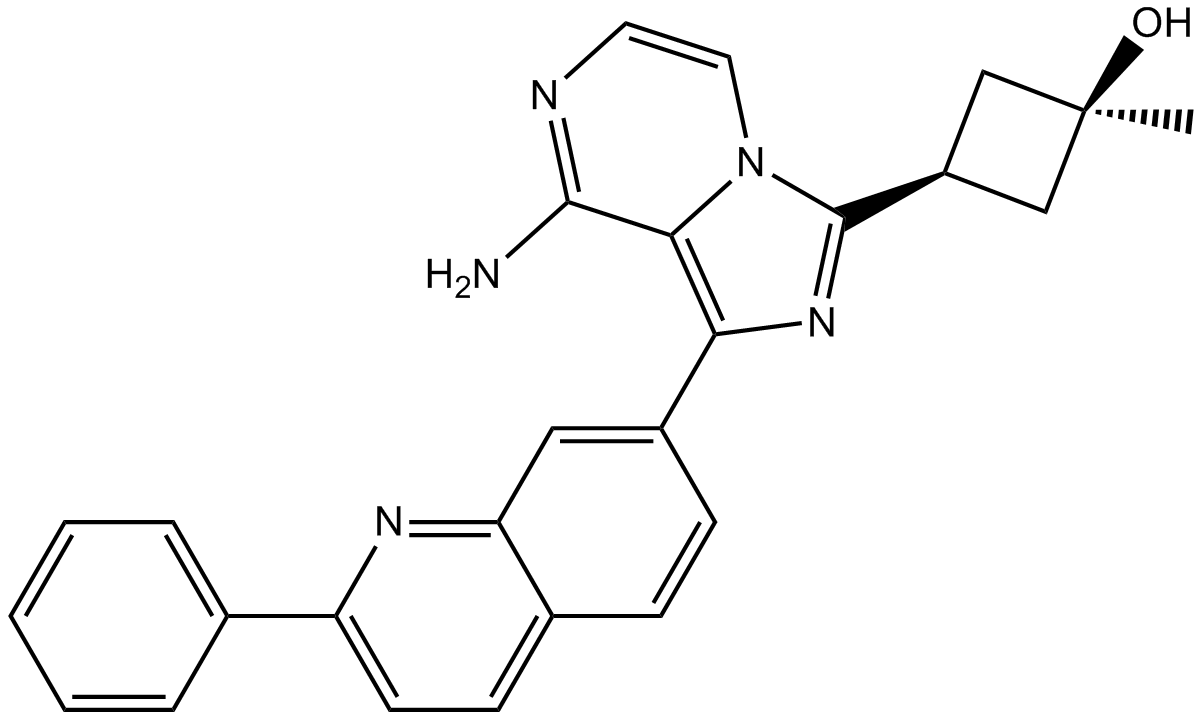
Related Biological Data
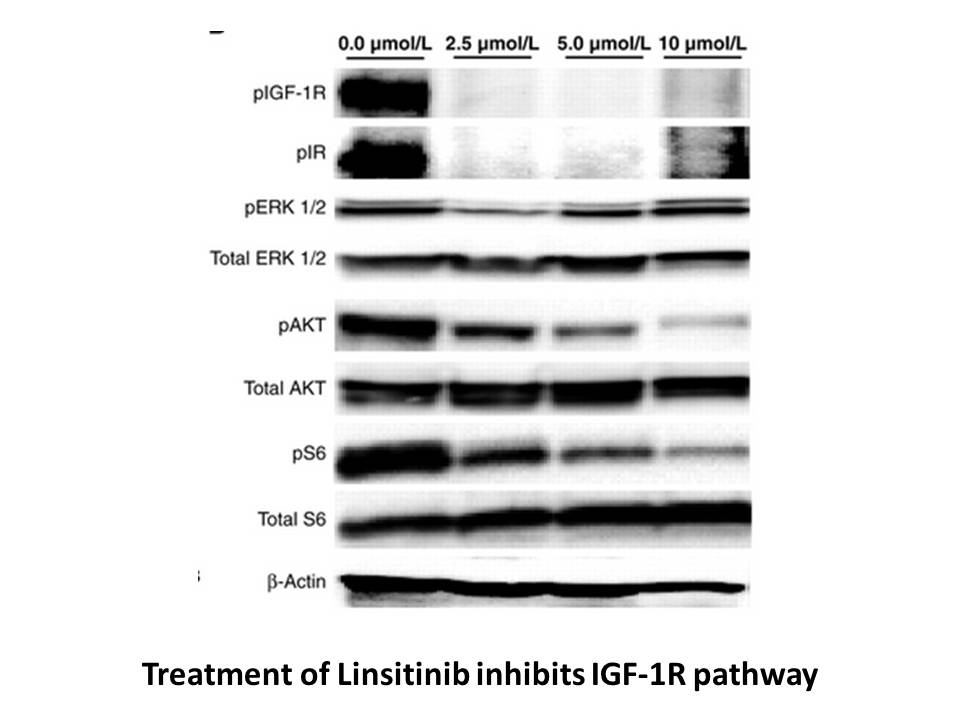
Related Biological Data
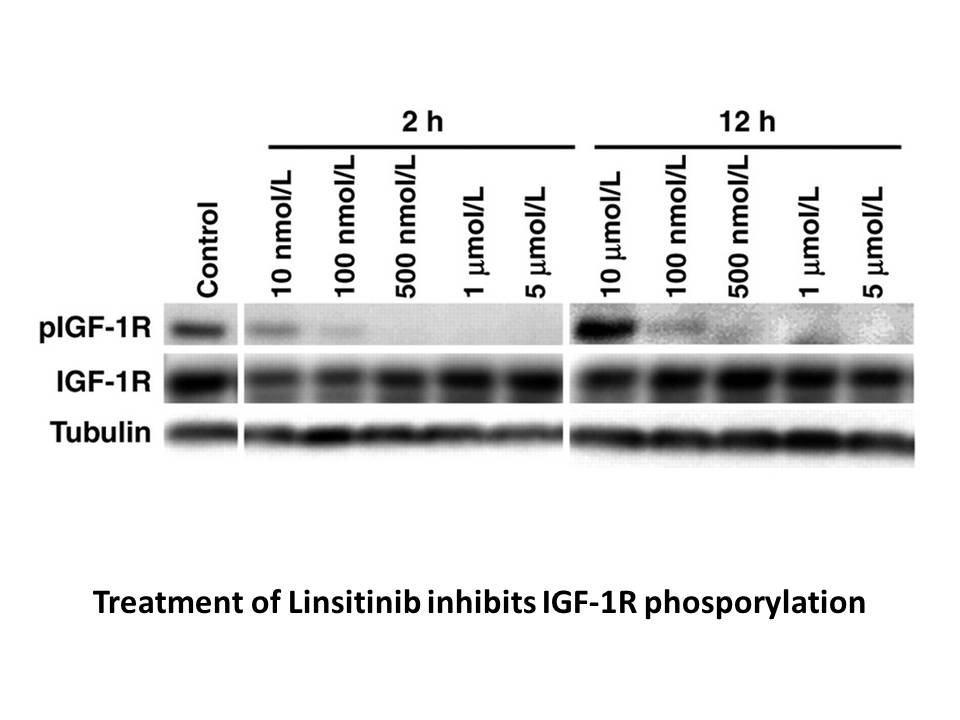
Related Biological Data
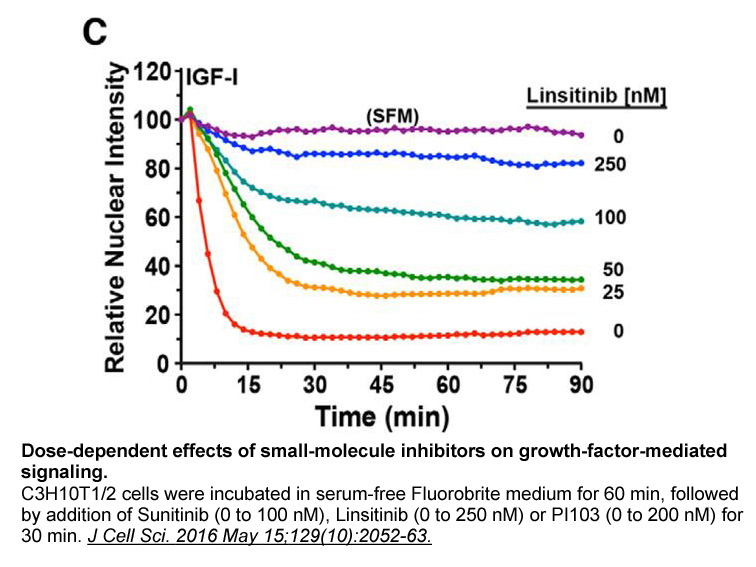
Related Biological Data
